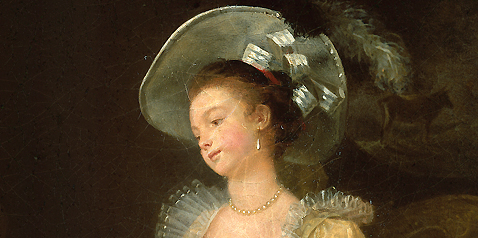
MARGUERITE GÉRARD
AND JEAN-HONORÉ FRAGONARD
After the official salon in Paris opened its doors to female artists in the 1790s, Marguerite Gérard (Grasse 1761 – 1837 Paris) regularly exhibited there: works in a very personal style, characterized by carefully executed details and delicate brushwork. Her model was Dutch genre painting of the seventeenth century, in particular the art of Gabriel Metsu. Gérard’s relatively small paintings could be easily transported, to the liking of private collectors who preferred to hang charming still lifes and appealing genre scenes in their rooms rather than bombastic history paintings. In addition, numerous etchings were made of her works, which made her even better known. By the end of her life, Gérard, who had never had an academic training, could look back on a successful artistic career; she numbered such prominent individuals as Napoleon Bonaparte and King Louis XVIII of France among her clients.
Gérard’s view of art was decisively shaped by her sister’s husband, the famous Rococo painter Jean-Honoré Fragonard (Grasse 1732 – 1806 Paris). Often, the pair even collaborated on works. In 1775 Gérard moved from Grasse to Paris, where from then on she lived with her sister’s family. As a member of the Fragonard household, she had the privilege of devoting herself to her art without worrying about a source of income.
Fragonard himself, a former pupil of the celebrated François Boucher, embodied the freedom-loving spirit of the Enlightenment. Not only his paintings but also his prints and drawings were characterized by a lively style. Both innovative and prolific in his œuvre, Fragonard had, at an early stage, abandoned the conventional path marked out by the Parisian Royal Academy and worked mostly for private clients. His works, which radiate lightness, joie de vivre and sensuousness, represent a further development of the Rococo forms of expression created by François Boucher and Antoine Watteau. Occasionally Fragonard’s delicacy of colour and fresh, almost sketchy brushwork are seen as anticipating the work of the Impressionists.


